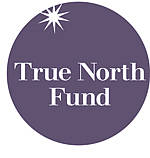EMCF launched a new fund in 2011 to aggregate private growth capital and help programs supported by the Foundation and the federal Social Innovation Fund expand to serve more low-income youth.

The name we gave this fund—the True North Fund—reflected the inspiration and example we believed these programs and this funding model could provide for helping our nation’s most vulnerable young people overcome the obstacles that confront them, discover a sense of direction and purpose in their lives, and steer a course to productive, independent, successful adulthood.
Fourteen co-investors committed $63 million to help the 12 True North Fund grantees meet the match requirements of the Social Innovation Fund (SIF) and implement their growth and evaluation plans.
More broadly, the True North Fund sought to build on the success of the Growth Capital Aggregation Pilot (GCAP) and demonstrate the impact and efficiency of extending this investment approach from individual grantees to an entire portfolio of organizations. The fund also hoped to encourage, by example and advocacy, investing public and private capital in expanding evidence-based programs.
EMCF covered 100 percent of administrative and operating costs, managed all reporting, and conducted quarterly meetings of co-investors until the True North Fund concluded its work in 2016.
THE RESULTS
Melinda Tuan's A Midpoint Report on the True North Fund documented how, as of June 2013, funding from the True North Fund had helped the nine initial EMCF SIF grantees serve more than 83,000 additional youth across the country. All nine grantees also launched or planned evaluations of their programs’ effectiveness. The True North Fund also helped the three additional EMCF SIF grantees selected in July 2013 meet their matching fund requirement and implement their growth and evaluation plans.
The True North Fund and the SIF also created opportunities to advance new kinds of regional funding partnerships, notably with the George Kaiser Family Foundation in Tulsa, Oklahoma, the Duke Endowment in North and South Carolina, and Tipping Point Community and the Hewlett Foundation in Northern California. These collaborations made it possible for grantees to establish and expand effective programs more expeditiously than they could have without local support.
The True North Fund, Tuan’s report concluded, “has the potential to be a philanthropic breakthrough.”




